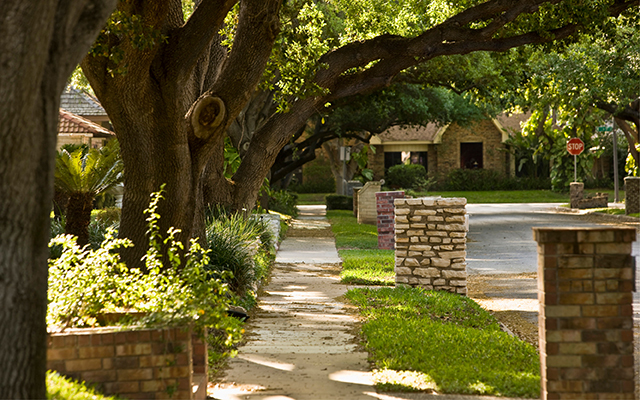When My Lovely Wife and I moved into our current abode several years ago, I vowed that it would be my last move. “They’re going to have to take me out of here feet first,” I stubbornly proclaimed.
MLW, who is more measured in her views of the future, has mostly humored me on this matter in the intervening years. Though she’s no more likely to relocate than I am, she realizes that conditions beyond our control may someday nudge us into a less ideal living situation. When reminded of this, I pretend to listen politely while mentally placing my hands tightly over my ears and crying, “La la la la . . . I can’t hear you!”
Yes, this qualifies as neurotic behavior.
Normal people ambling toward their eighth decade draft wills and healthcare directives, invest in long-term care insurance, negotiate winter time-shares in warmer climes, and assemble a sound portfolio of stocks and bonds designed to keep them footloose and fancy-free well into their 90s. Though they may prefer to stay in their own homes as long as possible, they know it doesn’t always work out that way and start planning their options. We are not these people.
To be fair, MLW actually ponders these issues from time to time, which can lead to serious conversations (except the whole condo-in-Florida thing, which we agree is just crazy talk), but we typically move on pretty quickly to more pressing matters: the dinner dishes, for instance, or that load of laundry in the dryer. You could call this a classic case of avoidance, refusing to acknowledge the brutal realities of old age, but we’re not ignoring the future completely. Amid all the half-hearted discussions, a few vague plans have gradually taken hold — and it turns out people all over the country are already showing us how they might work.
For nearly 20 years, a network of elderly folks living in Boston has provided practical services (grocery shopping, transportation, housework, home repairs, and the like) designed to help members stay in their own homes while connecting them with a larger community to boost their social connections. As Joseph Coughlin notes in his book, The Longevity Economy: Inside the World’s Fastest-Growing, Most Misunderstood Market, Beacon Hill Village emerged from the same stubborn determination to stay put that I’ve been voicing.
“In 1999, when the Beacon Hill neighbors began to consider creating something different, the story pervasive in the culture was clear,” Coughlin writes. “When you grow old, there was only one thing to do: move, whether it was to an independent- or assisted-living facility, country-club retirement community, or nursing home. The neighbors were determined to tell a new story.”
This mutual-aid concept suits my anti-institutional leanings and apparently has struck a nerve among plenty of other geezers. Nearly 200 similar communities have sprung up in 46 states, Coughlin reports, and another 150 are in development. Here in Minneapolis, Mill City Commons has been in operation since 2009 and offers similar resources and social connections.
MLW and I have talked about the challenges of organizing this sort of network in our neighborhood — a task that I find frankly too daunting to seriously consider — so it’s a bit of a relief to know somebody’s already pulled something together. The annual dues are reasonable ($525), but it will take some research to determine whether the obligations outweigh the value of the services and whether the opportunities for social interaction are appealing enough to conquer our antisocial tendencies.
This may be a bigger part of the picture than I’m willing to admit. The older I get, the less likely it is that I’ll go out of my way to meet new people and engage in unfamiliar social circles. There’s plenty of recent research showing that I’m not doing myself any favors on the functionality and cognitive fronts, but it’s countered by what Stanford University psychologist Laura Carstensen calls “socioemotional selectivity,” the tendency for the elderly to focus on meaningful, rather than superficial, relationships as they perceive their time growing short.
And it’s definitely an obstacle I’d need to confront if we chose to eventually consider another trending solution to the independent-living conundrum so many geezers face: roommates. One of the few concrete discussions MLW and I have had in recent years involves adding a bathroom to the second floor of our house as a way to accommodate a boarder who might also help with some household chores when or if we’re too decrepit to help ourselves. As Kaya Laterman reports in the New York Times, we’re hardly alone in considering that scenario.
“The concept of pairing older people with younger ones, particularly those who are not family members, is not a new one,” Laterman writes. “It was popularized by Maggie Kuhn, an elder-rights activist who opened up her Philadelphia home to others for more than 20 years before she died in 1975. Today’s home sharing, however, is as likely to be between those of the same age as it is to be intergenerational. The crucial thing is that it involves two or more people sharing an apartment or a house to their mutual benefit. And finances often play a big role.”
I can’t quite imagine how that sort of scenario would play out, given how much we covet our quiet evenings reading in the living room. I suppose it would be a bit like having our adult offspring back in the house again. We’d get used to the comings and goings, I suspect — especially if the only alternative involved hiring a moving van.
All these developments suggest there may be even more innovative options available by the time MLW and I actually reach a point where we have to make some real-life housing decisions. Meanwhile, I suppose we could get working on that healthcare directive. Or not.




This Post Has 0 Comments